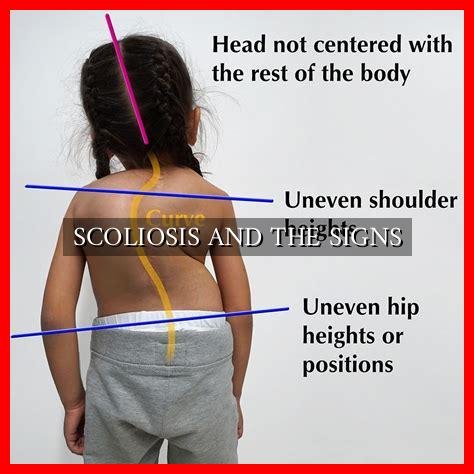-
Table of Contents
Understanding Scoliosis and Its Signs
Scoliosis is a common spinal condition that affects millions of people worldwide. It is characterized by an abnormal sideways curvature of the spine, which can lead to various health issues if left untreated. In this article, we will explore the signs of scoliosis and how to identify them early on.
What is Scoliosis?
Scoliosis is a musculoskeletal disorder that causes the spine to curve sideways. While some degree of curvature is normal, scoliosis is diagnosed when the spine curves more than 10 degrees to the right or left. This condition can develop at any age, but it is most commonly diagnosed in children and adolescents during growth spurts.
Signs of Scoliosis
Early detection of scoliosis is crucial for effective treatment.
. Here are some common signs to look out for:
- Uneven shoulders or waist
- One shoulder blade that appears more prominent than the other
- Uneven hips or ribcage
- A visible curve in the spine
- Difficulty breathing or chest pain (in severe cases)
Diagnosing Scoliosis
If you suspect that you or your child may have scoliosis, it is important to consult a healthcare professional for a proper diagnosis. The doctor will perform a physical examination and may order imaging tests such as X-rays to assess the degree of curvature in the spine.
Treatment Options
The treatment for scoliosis depends on the severity of the condition and the age of the patient. In mild cases, monitoring the curvature with regular check-ups may be sufficient. However, more severe cases may require bracing or surgery to correct the curvature and prevent further progression of the condition.
Case Study: Sarah’s Journey with Scoliosis
Sarah was diagnosed with scoliosis at the age of 12 during a routine school screening. Her parents noticed that her shoulders appeared uneven, prompting them to seek medical advice. After a series of tests, Sarah was diagnosed with a moderate curve in her spine.
Over the next few years, Sarah underwent regular check-ups with her orthopedic specialist to monitor the progression of her scoliosis. She was advised to wear a brace to prevent further curvature of her spine during her growth spurt. With the support of her healthcare team and family, Sarah successfully managed her scoliosis and avoided the need for surgery.
Conclusion
Scoliosis is a common spinal condition that can have a significant impact on an individual’s health and well-being if left untreated. By recognizing the signs of scoliosis early on and seeking timely medical intervention, it is possible to manage the condition effectively and prevent further complications. Remember, early detection is key to successful treatment outcomes.
For more information on scoliosis and its signs, visit Scoliosis Research Society.





